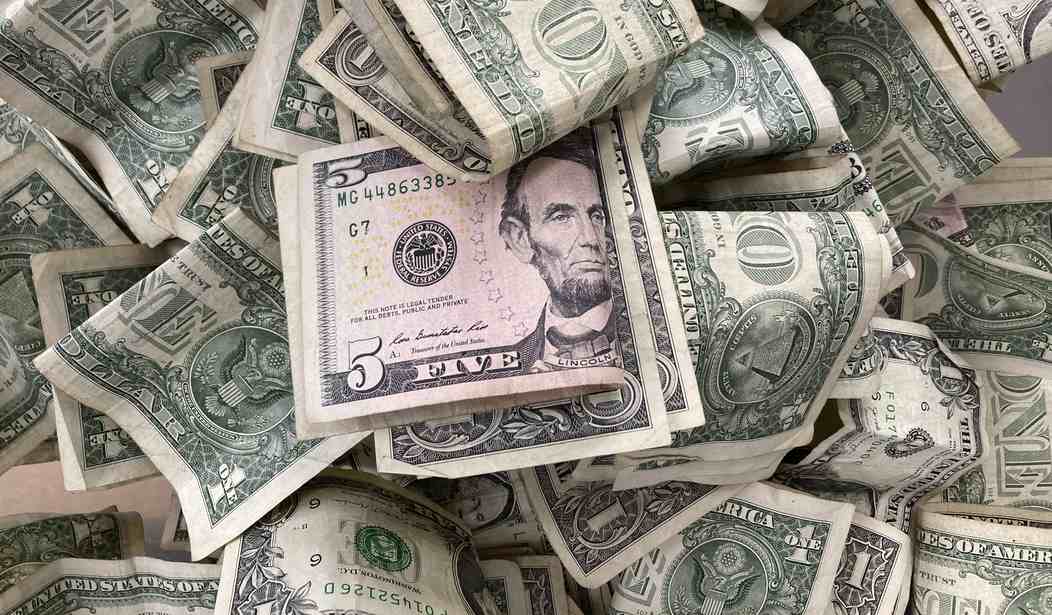President Barack Obama took the oath of office for his second term on Sunday, Jan. 20, 2013, in a private ceremony inside the White House. As of that day, the federal government's total debt was $16,432,619,424,703.06.
Last Tuesday, it climbed from $32,841,516,339,054.53 to $32,890,665,217,705.83 -- a little more than twice what it was on Obama's second inauguration.
The first Congress of the United States convened on March 4, 1789. It then took approximately 224 years -- from 1789 to 2013--for the federal government to accumulate that first $16.4 trillion in debt. During that time, the United States fought a civil war and two world wars and struggled through the Great Depression.
But in this era, it only took ten years and seven and a half months for the federal debt to double.
We have just lived through America's Double-the-Debt Decade.
In 2013, according to the Census Bureau, there were 122,459,000 households in the United States. The $16,432,619,424,703.06 in debt the federal government held at the time of Obama's second inauguration equaled approximately $134,190 per each of those households. In 2022, according to the Census Bureau, there were 131,202,000 households in the United States. The $32,940,629,592,824.66 in debt that the federal government held as of this Monday (the latest day on record) equaled approximately $251,068 per each of those households.
In fiscal 2013, according to the Monthly Treasury Statement, the federal government spent a total of $3.4542 trillion (which equals approximately $4.3785 trillion in September 2022, according to the Bureau of Labor Statistics inflation calculator). In fiscal 2022, it spent approximately $6.2716 trillion. That is a real increase of $1.89 trillion -- or 43%.
Recommended
Where did the federal government spend this money?
In fiscal 2013, the Department of Health and Human Services spent more money than any other government agency ($886.293 billion), according to the Monthly Treasury Statement. The Social Security Administration spent the second most ($867.394 billion), and the Department of Defense-Military Programs spent the third most ($607.801 billion). The Department of the Treasury also spent $415.670 billion in interest on Treasury debt securities in that fiscal year.
In fiscal 2022, the same three agencies led the way on federal spending. The Department of Health and Human Services spent approximately $1.6429 trillion. The Social Security Administration spent $1.282 trillion, and the Department of Defense-Military Programs spent $726.571 billion.
Last year, the Treasury Department paid $717.611 billion in interest on Treasury debt securities -- which almost eclipsed the $726.571 billion the federal government paid for national defense.
Through July of this fiscal year, the federal government had already spent $5.3021 trillion.
At the beginning of this fiscal year, the federal debt was $30,928,911,613,306.73. As of Monday, it was $32,940,629,592,824.66 -- an increase of $2,011,717,979,517.93.
That makes fiscal 2023 the second straight year that the federal debt has increased by more than $2 trillion and one of eight years out of the last 10 when it has increased by more than a trillion.
These massive annual increases in the federal debt pre-date and post-date the COVID pandemic. In fiscal 2017, the federal debt increased by $671.455 billion. In fiscal 2018, it jumped by $1.271 trillion, and, in fiscal 2019, by $1.203 trillion. In fiscal 2020, the year the pandemic hit, the debt increased by $4.2259 trillion.
But, in fiscal 2021, the increase in the debt dropped to $1.4835 trillion -- before climbing to $2.4999 trillion in fiscal 2022 and topping $2 trillion again so far this year.
In June, Republican and Democratic leaders in Congress made a deal to suspend any limit on the federal debt until Jan. 1, 2025. President Joe Biden signed that deal into law.
One impact of this law was that it diminished the significance of the debt as a political issue going into the federal election that will take place next November -- two months before the debt-limit suspension expires.
But the fiscal significance can be seen in the ongoing upward trend in this nation's already massive debt.
The Constitution unequivocally gives Congress the power to control federal taxes and spending. Article 1, Section 8, Clause 1 says: "The Congress shall have the Power To lay and collect Taxes, Duties, Imposts, and Excises, to pay the Debts and provide for the common Defence and general Welfare of the United States."
Article 1, Section 9, Clause 7 says: "No money shall be drawn from the Treasury, but in Consequence of Appropriations made by Law."
This nation needs a Congress that will use these powers responsibly.
























Join the conversation as a VIP Member